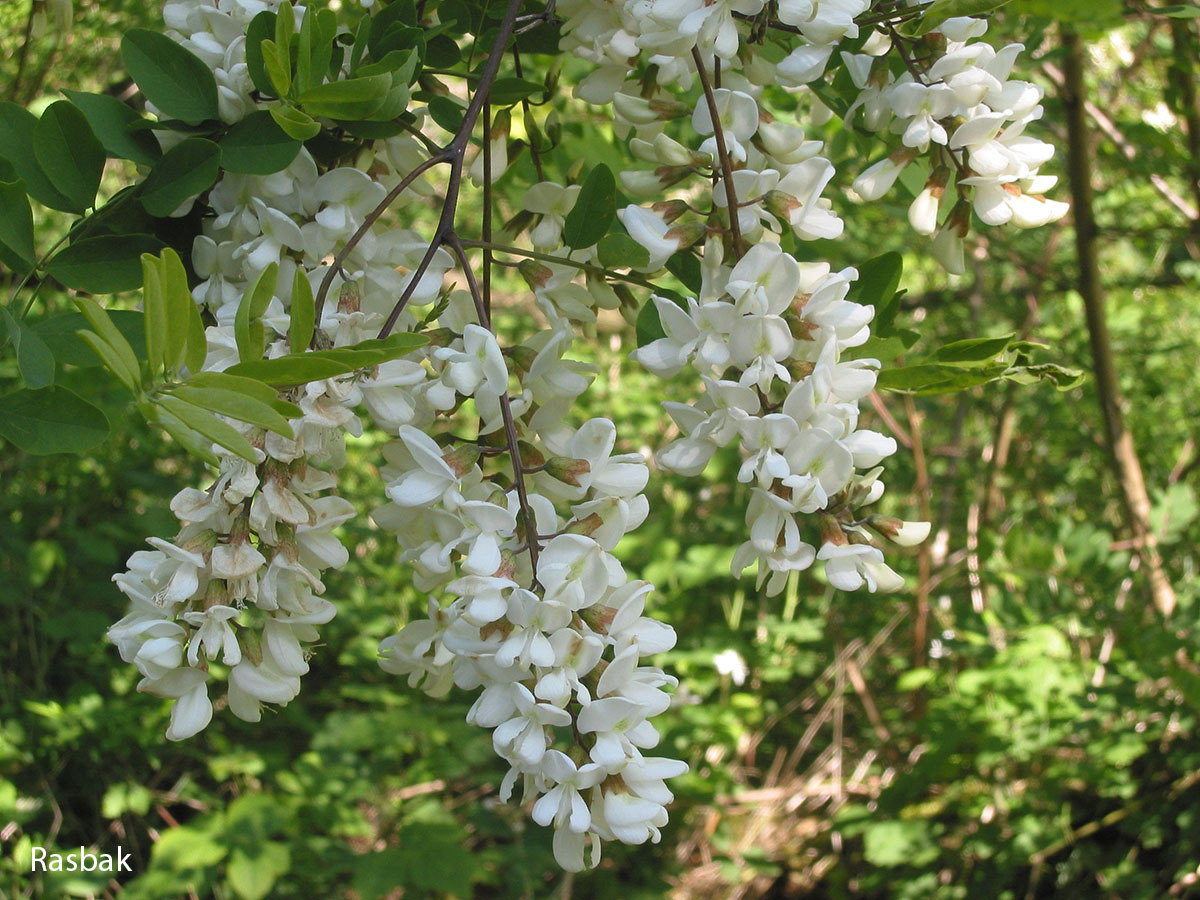Black locust identification and control
Robinia pseudoacacia, Fabaceae

Black locust is a fast growing thorny tree in the pea family that can reach 40 to 100 feet. The bark of young saplings is smooth and green but the bark of mature trees is dark brown and deeply furrowed, with flat-topped ridges. Seedlings and sprouts are easily identified by the long paired thorns (also present on the branches of mature trees). Leaves are alternate along stems and composed of 7 to 21 leaflets that are oval to rounded, dark green above and pale beneath. Fragrant white flowers appear in drooping clusters in May and June and have a yellow blotch on the uppermost petal. Seed pods (legumes) are smooth, 2 to 4 inches long, and contain 4 to 8 seeds. It spreads by seed and by clonal growth via extensive suckering.
Although native to parts of North America, it is invasive outside its native range and can negatively impact native prairie, meadow, forest edge and riparian plant communities. Dense clones of black locust create shaded islands with little ground vegetation.
It is considered an invasive plant in King County and is on the King County Weeds of Concern list. Control is recommended where natural resources are being protected or as part of a stewardship plan. Contact the noxious weed program for advice on control methods, especially in sensitive areas.
Report noxious weeds in King County, Washington
- Please notify us through our online infestation form
Locate noxious weeds in King County, Washington
- Use our interactive noxious weed map
Related information
Related agencies
Program offices are located at 201 S. Jackson St., Suite 600, Seattle, WA 98104. To contact staff, see the Noxious Weed Control Program Directory, send an email, or call 206-477-WEED (206-477-9333).

 Translate
Translate